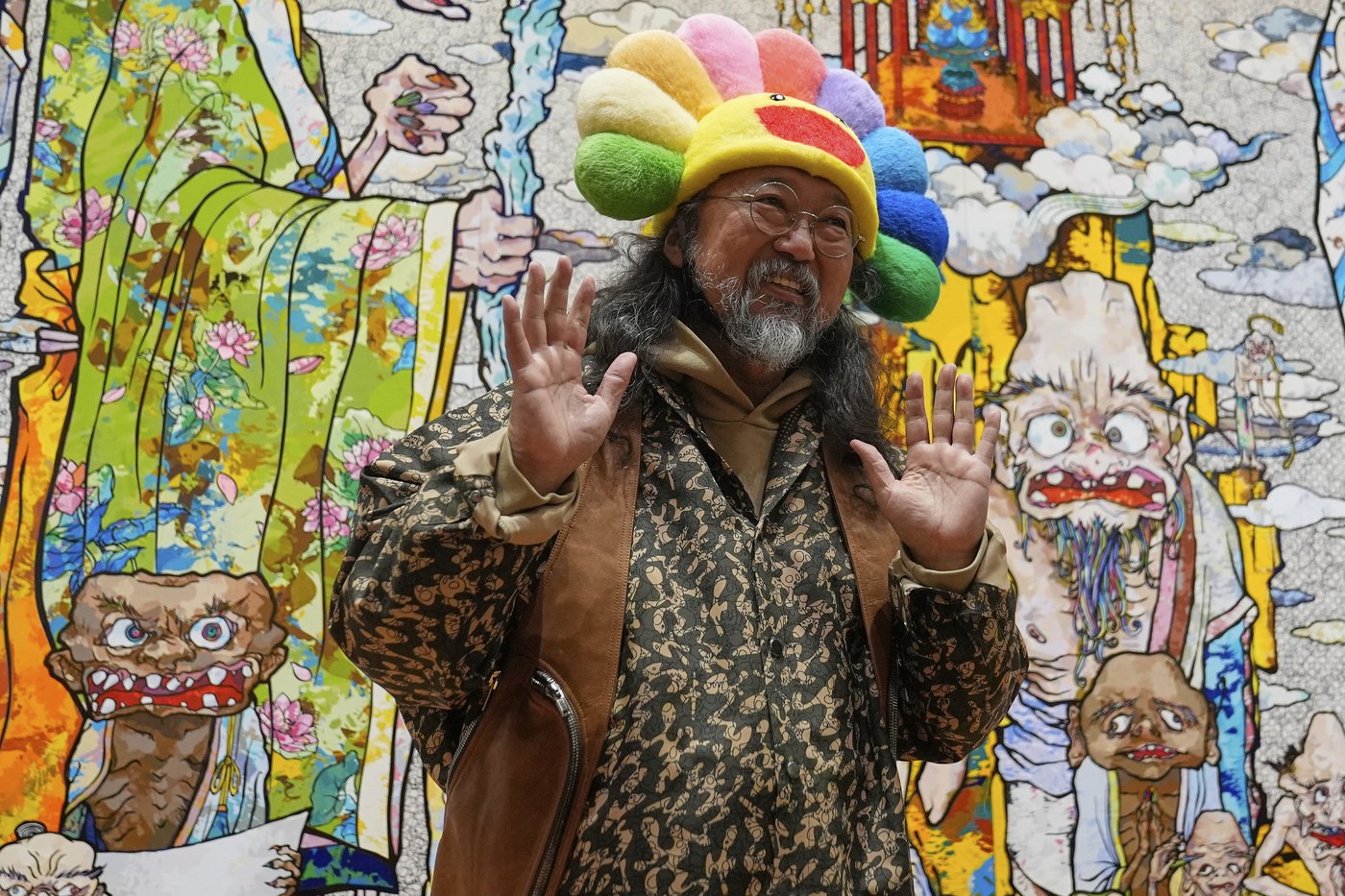
Japanese artist Takashi Murakami opens exhibit in Ohio museum with more than 100 works
CLEVELAND (AP) — Japanese contemporary artist Takashi Murakami has never been limited to one medium, creating paintings, sculptures, luxury goods with fashion houses like Louis Vuitton, album covers and an exclusive merchandising collection with Major League Baseball.
Now, he has filled a U.S. museum hall with portraits in every color as part of an exhibit opening Sunday at the Cleveland Museum of Art. “Takashi Murakami: Stepping on the Tail of a Rainbow,” an update of an exhibit first shown in Los Angeles, features more than 100 ranging works.
Murakami, known for his smiling rainbow-colored flower icon, intentionally layered light-hearted themes with historical events linked to trauma, he told The Associated Press.
The art explores the impact of trauma on people and culture, said Ed Schad, curator and publications manager at contemporary art museum The Broad in Los Angeles.
The portraits “have historical roots and that they could actually tell you a lot about what a society is doing, how healthy a society is, what a society is responding to,” Schad said. “What society is responding to most often in this exhibition is the idea of trauma.”

One sculpture depicts Murakami and his dog with half of their bodies in anatomical form, showing their bones and organs, while the other half is their outward appearances. The sculpture, Pom and Me, is described as Murakami’s interpretation of his experience in the West through the lens of his Japanese identity.
Square portraits featuring cartoonish flowers with facial expressions cover one wall of the exhibit, organized by background color to create a rainbow effect. One flower is wiping a tear from its eye, while another appears to be a zombie. One has blood dripping from its mouth. One appears to be in awe watching fireworks.
Though there are no obviously direct visual references to historical events, the museum said the art can be seen through the lens of three events in Japanese history: the atomic bombings of Hiroshima and Nagasaki by the United States during World War II, the 2011 Tōhoku earthquake and tsunami, leading to the Fukushima Daiichi nuclear accident, and the COVID-19 pandemic.
Murakami said it’s a bit of a misunderstanding that his work “is very easy and very popular.”
“But this is okay because this is one of my tricks,” he said.

What someone might admire about his art as a child, Murakami said, would likely not be what is admired by an adult.
Before entering the exhibit on the lower floor of the museum, visitors can walk through a version of the Yumedono, the octagonal-shaped building at Horyuji Temple in Nara, Japan. Murakami said he was inspired to create the structure after viewing the 2024 television series “Shōgun.”
Inside the structure are four new paintings — “Blue Dragon Kyoto,” “Vermillion Bird Kyoto,” “White Tiger Kyoto” and “Black Tortoise Kyoto” — created between 2023 and 2025.
The ticketed exhibit runs until early September.

Join the Conversation!
Want to share your thoughts, add context, or connect with others in your community?
You must be logged in to post a comment.


















